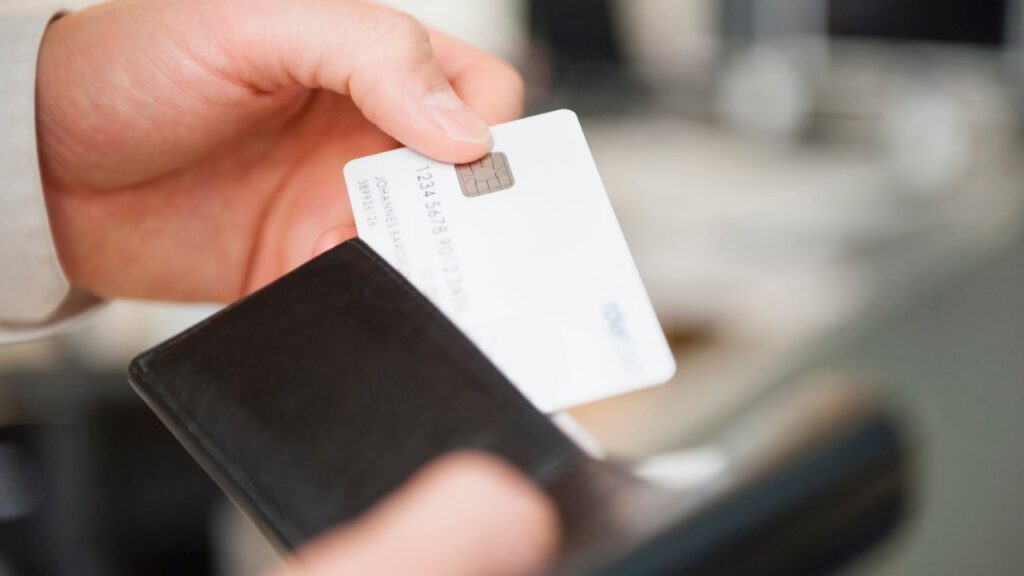Key takeaways
- The numbers on a credit card help identify the credit card network, the company that issued the card and the cardholder.
- Credit card numbers are either 15 or 16 digits, with each digit having its own meaning and purpose.
- Keeping your credit card number safe can help prevent fraudulent purchases and the stress they can cause.
The 15 or 16-digit credit card number on the front or back of your card helps authenticate every purchase you make, whether you’re buying something in-person or online. Not only that, but the way these numbers are structured helps identify who the card issuer is, which payment network is being used and the consumer who owns the card.
But, how are credit card numbers determined? And what sequences of numbers are actually identifying factors? This guide will answer those questions and more while explaining what the numbers on your credit card actually mean.
How do I read my credit card number?
First off, you should know that credit cards that operate on the Discover, Mastercard and Visa networks are 16 digits long, whereas American Express credit cards have 15-digit numbers. The series of numbers on a credit card are broken down into the following categories.
First credit card digit: Card network or Industry identifier
The first credit card digit listed on a card indicates the credit card network being used and/or the industry associated with the card, or the major industry identifier (MII). When it comes to the digits assigned to credit card issuers specifically, the chart below shows the first digit you’ll find with cards on the major payment networks.
| First digit | Credit card network |
|---|---|
| 2 or 5 | Mastercard |
| 3 | American Express |
| 4 | Visa |
| 6 | Discover |
Different first digits are used to describe different industries as well. This chart outlines these industries while highlighting the first digit that can show up on a credit card as a result.
| First digit | Industry |
|---|---|
| 1 | Airlines |
| 2 | Airlines and Financial |
| 3 | Travel and Entertainment (includes Amex) |
| 4 | Banking and Financial (includes Visa) |
| 5 | Banking and Financial (includes Mastercard) |
| 6 | Merchandising and Banking (includes Discover) |
| 7 | Petroleum |
| 8 | Healthcare and Communications |
| 9 | Government |
Next five digits: Issuer Identification Number (IIN)
When you combine the industry identifier with the next five digits, you can work out who the card issuer is, as well as the product the card relates to. That’s because the next five digits are the card’s Issuer Identification Number (IIN) or Bank Identification Number (BIN).
Remaining credit card numbers; Cardholder identification
The seventh to the 15th digit (or 14th for American Express) form a unique sequence to identify the cardholder.
Final digit
Finally, the last digit is known as a “check” digit. This is based on a mathematical formula, and it confirms the validity of the card.
Other numbers found on a credit card
While numbers listed on a credit card help identify all the parties involved in the card’s use and operation, there are other numbers listed on cards you should know about. These include:
- The expiration date: The expiration date on a credit card typically comprises four digits, including two digits for the month and two digits for the year. For example, a credit card that expires in June of 2029 would show an expiration date of 06/29. Expiration dates on credit cards can be used to verify buyers when purchases are made online, and they ensure consumers get a replacement card with updated safety features every few years.
- The security code: Security codes on credit cards are often referred to as card verification values (CVV) or card verification codes (CVC). These codes are three or four digits on their own, and they are used to verify purchases made online and over the phone. The security code for most cards is found on the back, yet American Express lists its security codes on the front of each card instead.
How does a credit card account number work?
Your actual account number may be up to 12 digits long, and it identifies you as the owner of the credit card account. Credit card numbers are assigned by the financial institution issuing the card.
The account number on the card begins with the seventh digit and ends on the second to last digit. So, to find a Discover account number you would look at the long number on the front of your card and cross out the first six digits, as well as the last one.
While your credit card number may change if your card is lost or stolen, your account number stays the same. Also, for American Express customers, a card issued to an additional cardholder will have different card numbers than the main cardholder, even though both cards are linked to the same account.
How to protect your credit card number
If your credit card number gets into the wrong hands, a thief may find a way to use it for fraudulent purchases. The following tips can help you keep your data out of the hands of hackers and thieves:
- Add your card number to a mobile wallet. Adding your credit card number to a mobile wallet like Samsung Pay or Apple Pay lets you make purchases using a unique transaction code instead of sharing your card number with merchants.
- Only shop on secure websites and wifi networks. Never enter your credit card details while using a public internet connection, and make sure you only shop on secure websites that begin with “https” rather than “http”.
- Store your cards somewhere safe. Keep your credit cards in a place where they cannot be easily viewed, and make sure to store them in a secure location when you’re not around.
- Use virtual card numbers when you shop online. Some credit cards offer virtual card numbers you can use when you shop online, which help you make purchases while keeping your actual card and account number private.
Frequently asked questions
-
Your credit card account number forms part of your card number, but the two are not the same. Credit card account numbers are often shorter, but they are always completely unique to you.
-
Credit cards have 15 or 16 digits depending on the credit card network being used. For example, Discover, Mastercard and Visa credit cards all have 16 digits, whereas American Express credit cards have 15 numbers instead.
-
Someone can steal your credit card number and use it to make fraudulent purchases. However, they will also likely need your expiration date and security code for the transaction to go through. Keeping this information private can help you prevent credit card fraud as a result.
The bottom line
Your credit card number may seem totally random, but there’s meaning behind each digit on your card. Some of the numbers identify the card issuer or industry, whereas others reveal the credit card payment network and the consumer the card actually belongs to.
Other numbers on a credit card explain when it expires or provide additional security for online or phone-based purchases.
Read the full article here
















